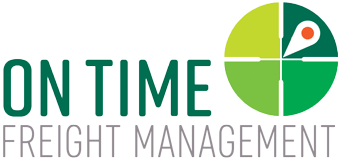Freight management refers to the process of overseeing and optimising the transportation of goods from one location to another. It covers the planning, organising, monitoring and controlling of transportation activities. This also includes selecting the right carriers, managing routes, optimising transport modes and ensuring everything arrives in the right condition.
Logistics is the umbrella term. It covers the entire process of moving goods, from sourcing raw materials to the final delivery to the customer. It includes everything from inventory management to warehousing, order fulfilment, and even the customer service aspects of delivery.
Freight management, on the other hand, is a subset of logistics. It focuses specifically on the movement of goods from one place to another. This includes managing the transportation of goods, selecting the best carriers, deciding on routes, and determining the most efficient transport modes.
In the traditional sense, freight refers to goods being transported overland, typically in trucks or trains. It’s the term commonly used in the context of land transportation. Freight is also closely tied to the financial side of transportation, how much it costs to move the goods, the charges associated with it, and how that affects the overall shipment.
On the other hand, cargo refers to goods being transported by sea or air. So, when you hear a cargo ship or cargo plane, it indicates the method of transport, i.e., on the ocean or in the sky. Cargos are also often used for shipments that travel longer distances, especially international shipments.
Calculating freight charges involves more than just weighing your shipment. Key factors include the type of cargo, such as perishable or hazardous goods, that require special handling and transport.
Size and weight also play a role in costs, as bulky, awkward-shaped or heavy shipments take up more space or require more fuel.
Choosing the transport method, whether Full Truckload (FTL) or Less Than Truckload (LTL), affects the cost, as FTL is typically more economical for large shipments. Another thing to note is that longer distances and faster delivery times also increase the cost, as do fluctuating fuel prices, which impact shipping rates.
Effective freight management involves key elements like choosing the right carrier, optimising routes for efficiency, leveraging technology for tracking goods in transit and relying on skilled logistics professionals.
Businesses in Australia and beyond can reduce freight costs significantly by focusing on some simple strategies.
For starters, route optimisation helps identify the most cost-effective delivery paths, cutting fuel costs and reducing travel time. Consolidating shipments can also save money by combining smaller loads into one, reducing per-unit shipping expenses. Negotiating better rates with carriers, particularly for high-volume shipments, also ensures businesses get the best deal.
